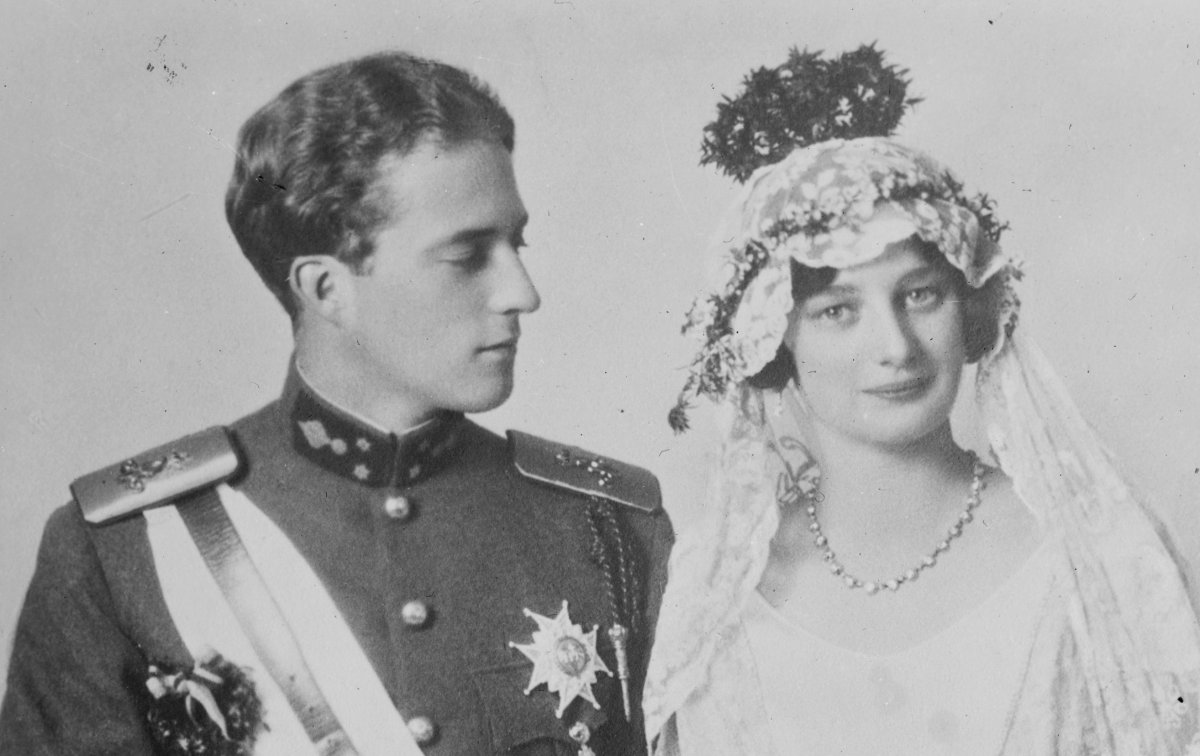
Ahead of this weekend’s royal wedding in Brussels, we’re devoting our Sparkling Spotlight posts to jewels worn by Belgian royal brides. First up: Princess Astrid of Sweden, who married the future King Leopold III of Belgium in November 1926.
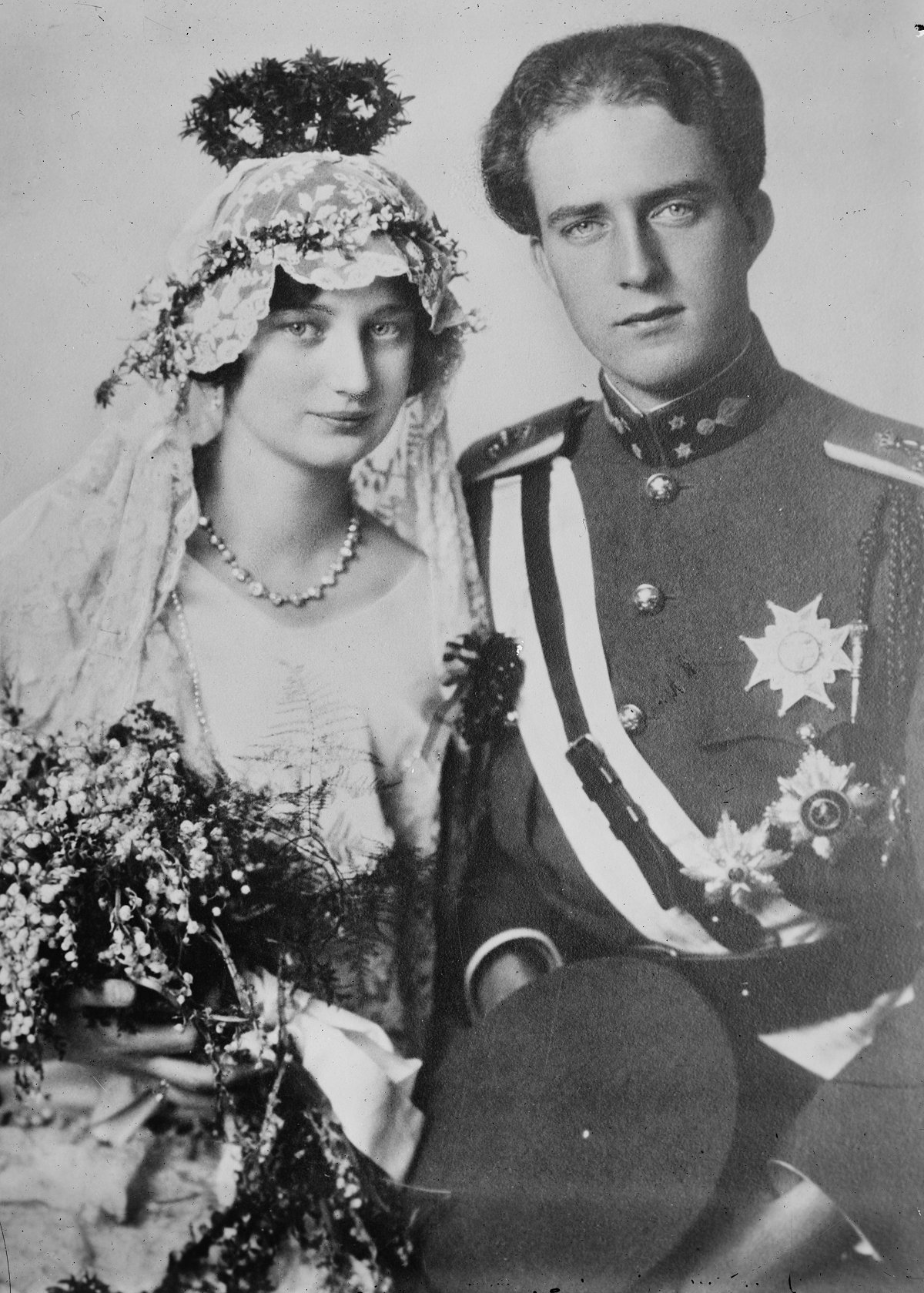
Crown Prince Leopold and Princess Astrid were, by all accounts, a love match rather than a traditional arranged royal marriage. They were wed in a pair of ceremonies in November 1926. The first, a civil wedding, was held in her hometown of Stockholm. The ceremony was held in the throne room of the Royal Palace, home of the bride’s uncle, King Gustaf V of Sweden.
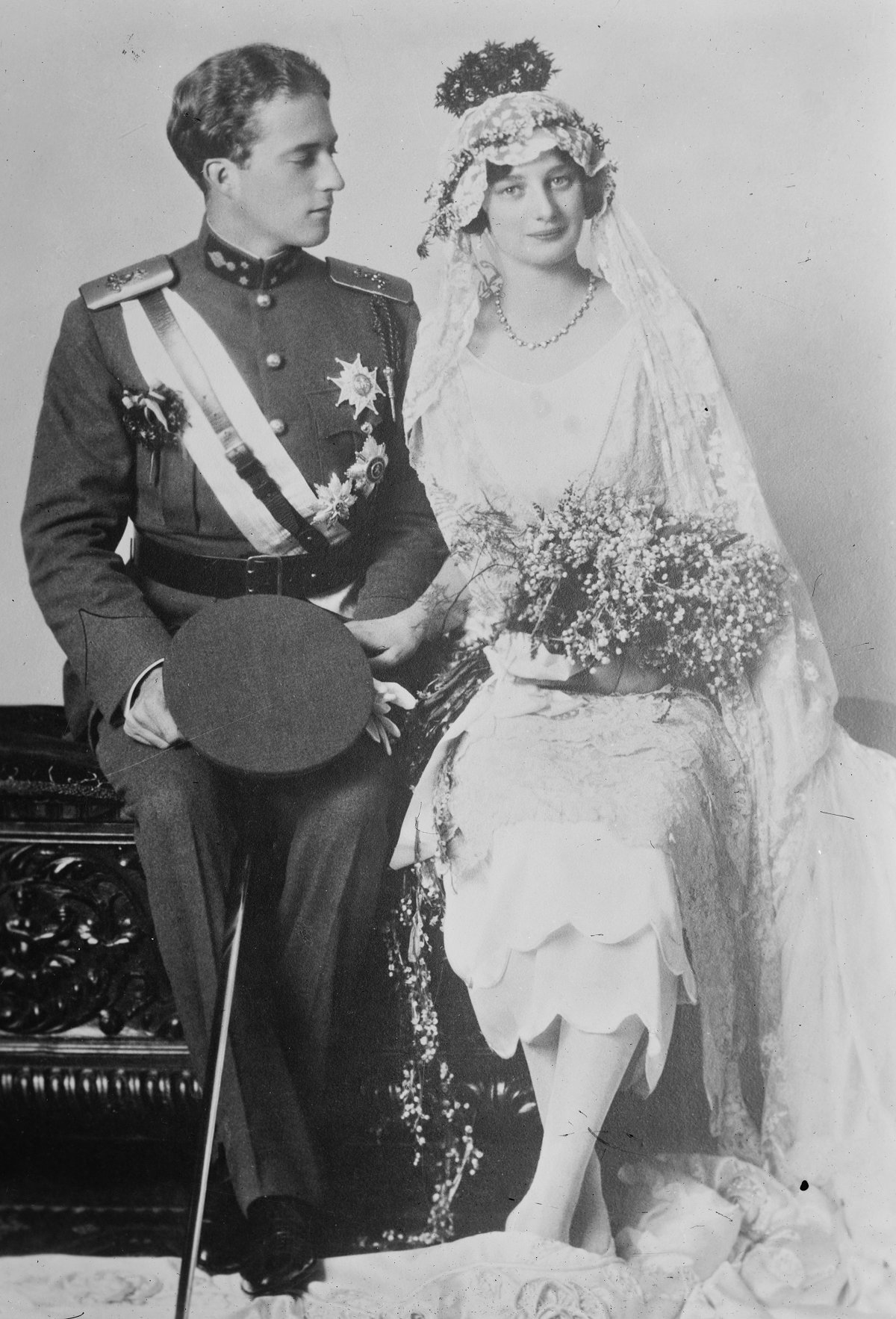
Princess Astrid wore a white satin wedding gown trimmed with seed pearls for the civil ceremony. Both the length of the skirt and its scalloped hem were very on-trend for a 1926 wedding. She also wore the same lace veil that had been worn by her mother, Princess Ingeborg, and her sister, Princess Margaretha, for their wedding ceremonies.
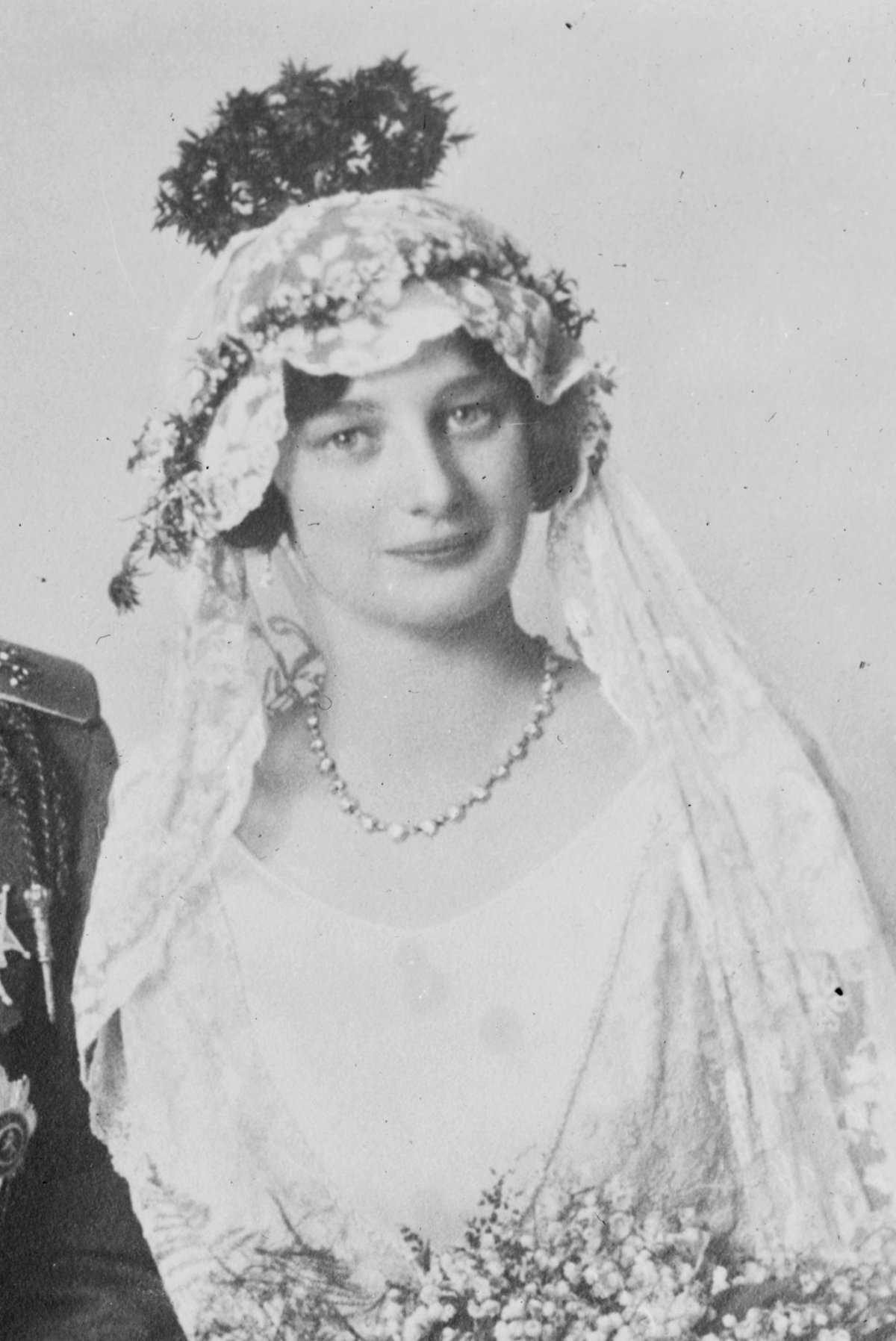
She topped the veil with a garland of orange blossoms and myrtle, plus a traditional Swedish bridal crown, also made of myrtle.
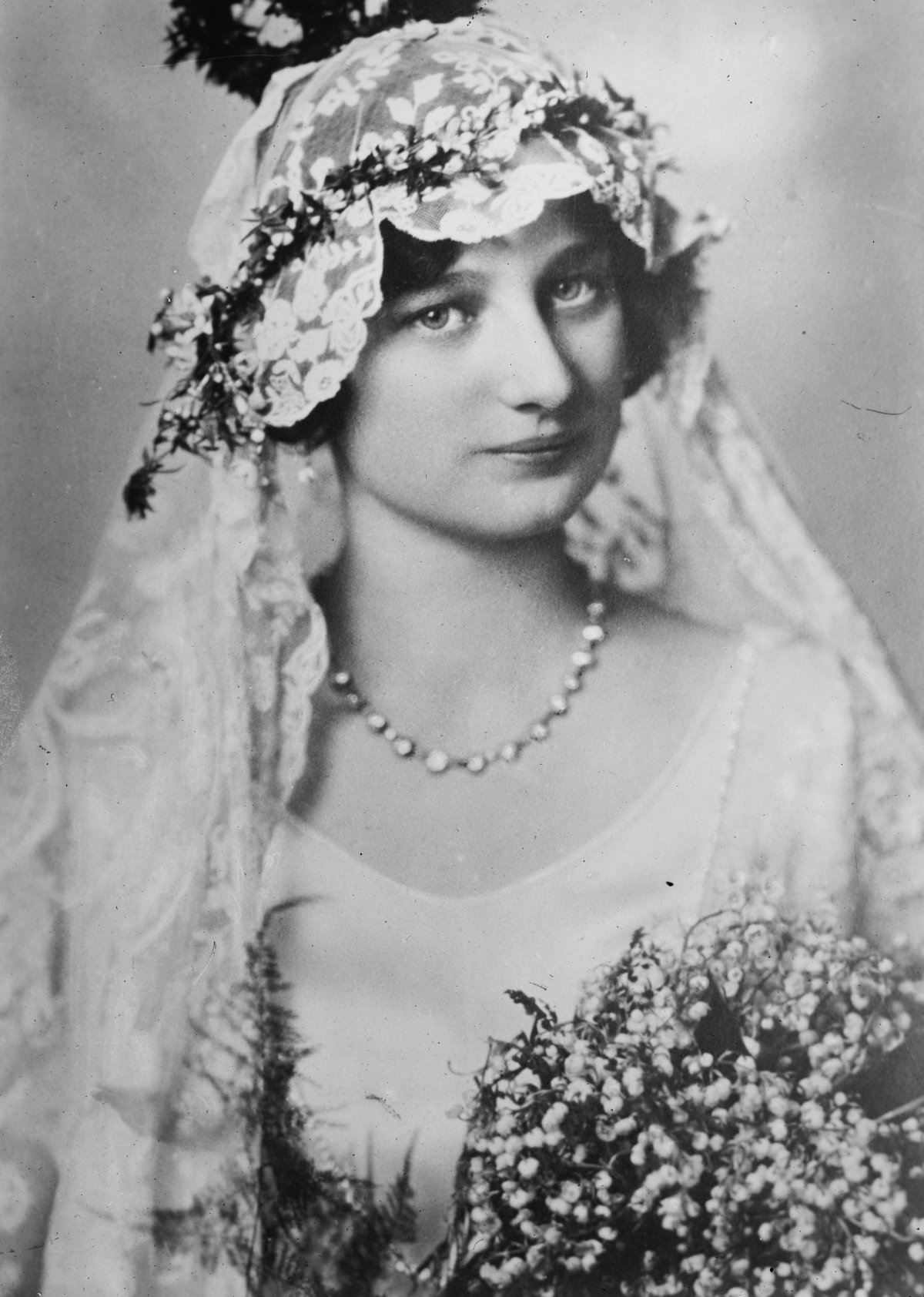
Her other major adornment for the wedding was a diamond necklace. Her uncle, King Gustaf, had given her a diamond necklace as a wedding present, and it seems like that it’s this one.
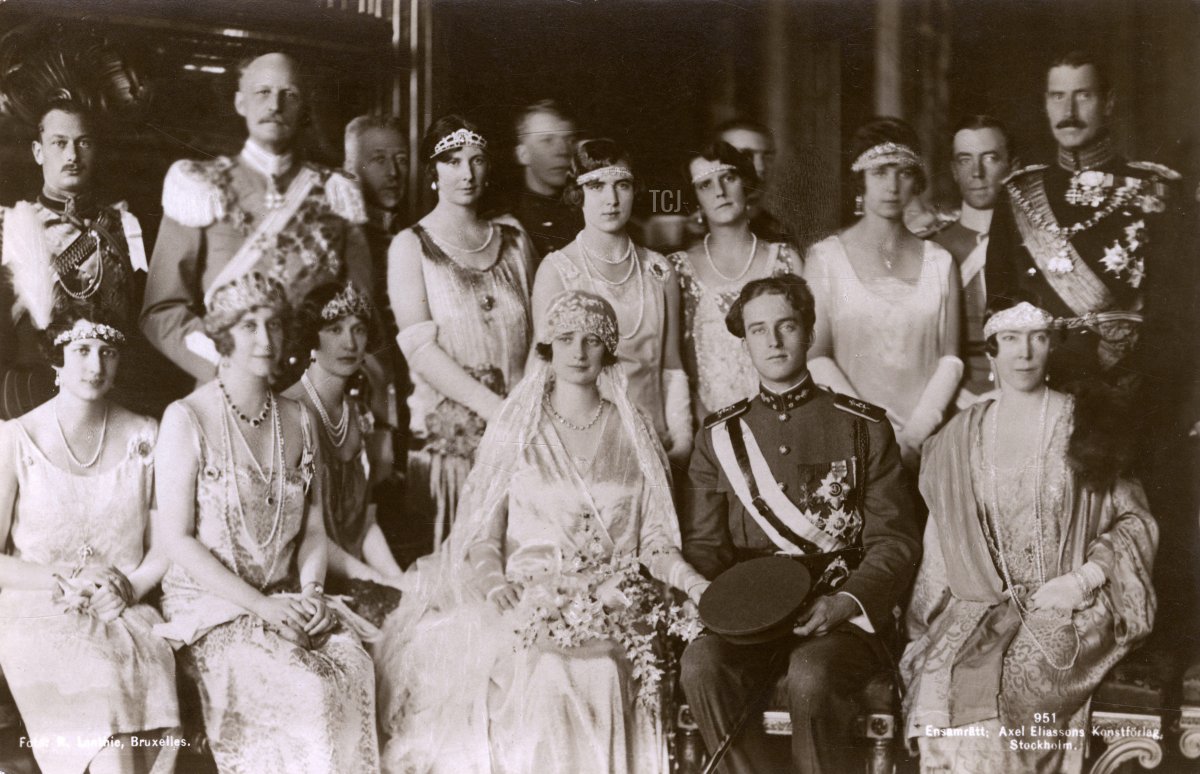
A few days later, the Belgian and Swedish royal families gathered in Brussels for the religious wedding ceremony, which was held at the Cathedral of St. Michael and St. Gudula. This is a family portrait taken after that ceremony.
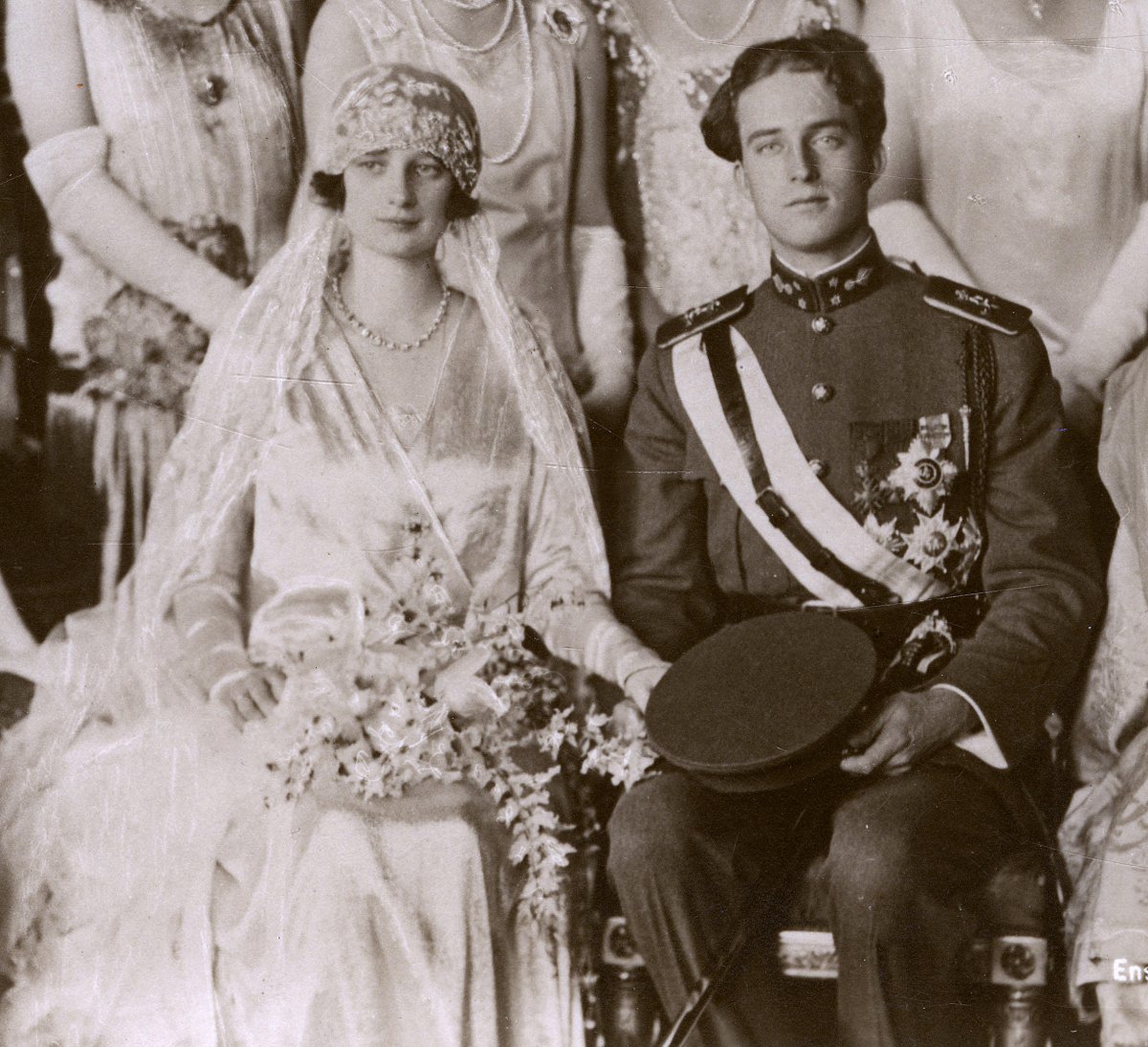
Astrid wore a second wedding gown for the religious ceremony, but she chose again not to wear a wedding tiara with her veil. The diamond necklace was again the major jewel worn by the bride.
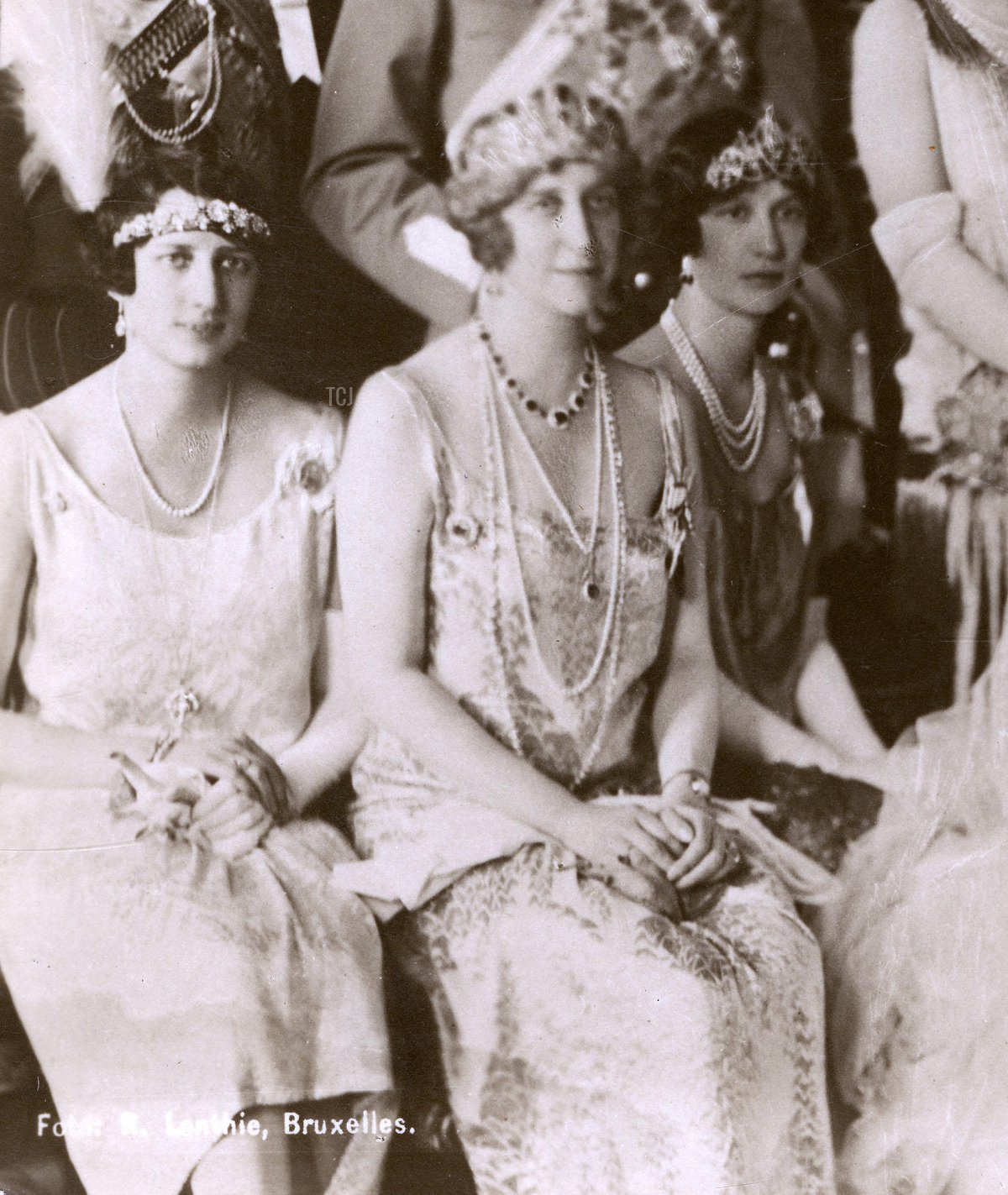
But even though Astrid didn’t wear a tiara for her wedding, there were plenty of tiaras on display for the ceremony. Here are Astrid’s mother, Princess Ingeborg of Sweden (in the center), flanked by her two other daughters, Princess Märtha (on the left, later Crown Princess of Norway) and Princess Margaretha (on the right, wife of Prince Axel of Denmark). Ingeborg is wearing her grand diamond and emerald parure, which is now part of Norway’s royal jewelry collection. Margaretha wears her diamond floral tiara, which was an inheritance from her French royal mother-in-law. And Märtha, intriguingly, is wearing the Turquoise Daisy Bandeau, which she borrowed from a cousin, Princess Ingrid of Sweden, for the occasion.
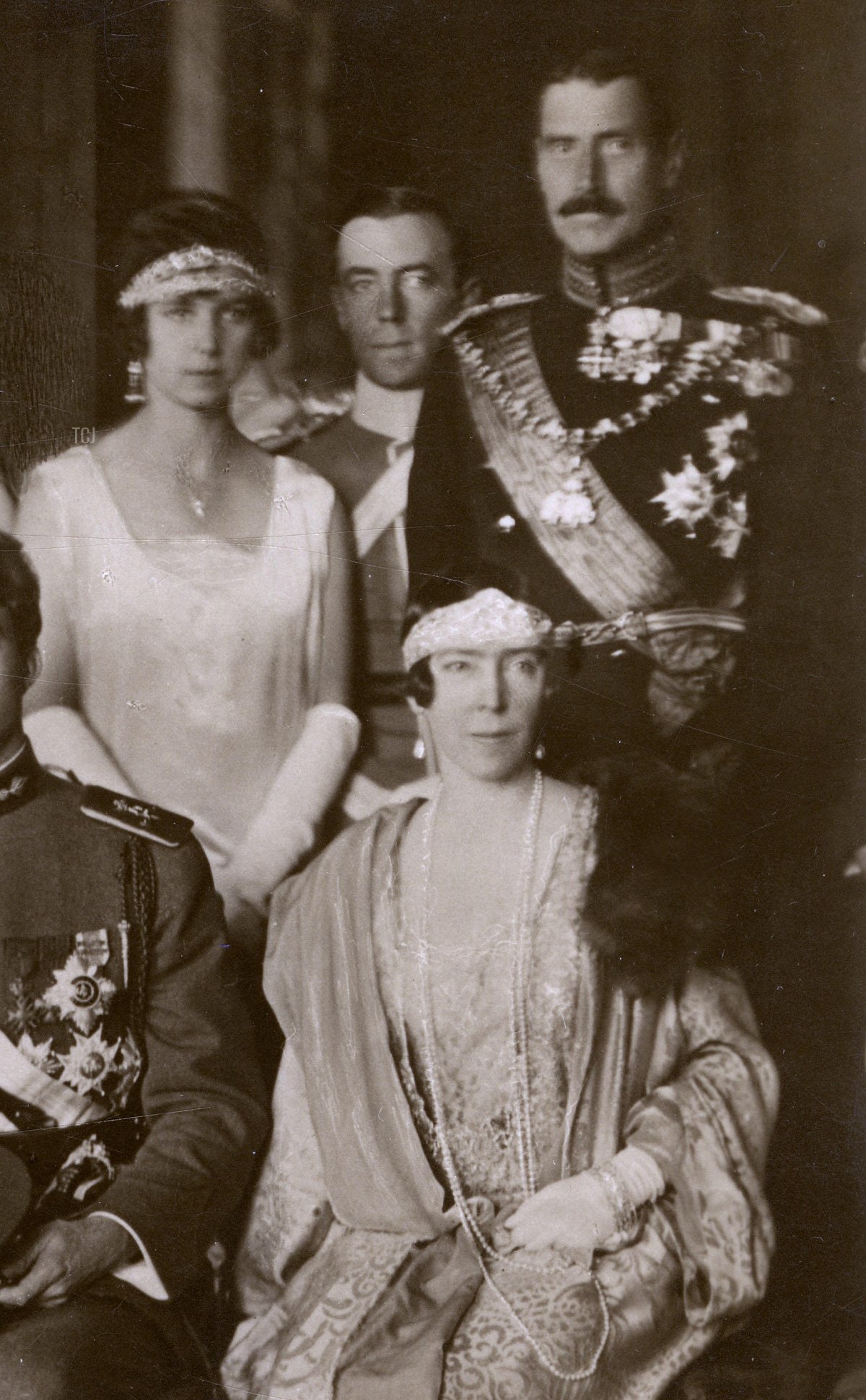
The women of Crown Prince Leopold’s family wore tiaras, too. His mother, Queen Elisabeth, is seated beside him. She’s wearing her diamond bandeau from Cartier, which was later worn by Leopold’s second wife, Princess Lilian. (That’s a long story.) The other woman in the photograph is Leopold’s sister, Princess Marie-José of Belgium, who would later marry the Crown Prince of Italy. She’s wearing a double bandeau that would later feature prominently in her engagement portraits. (The two men in the portrait are King Christian X of Denmark, on the right, and Count Folke Bernadotte, partially obscured in the back row.)
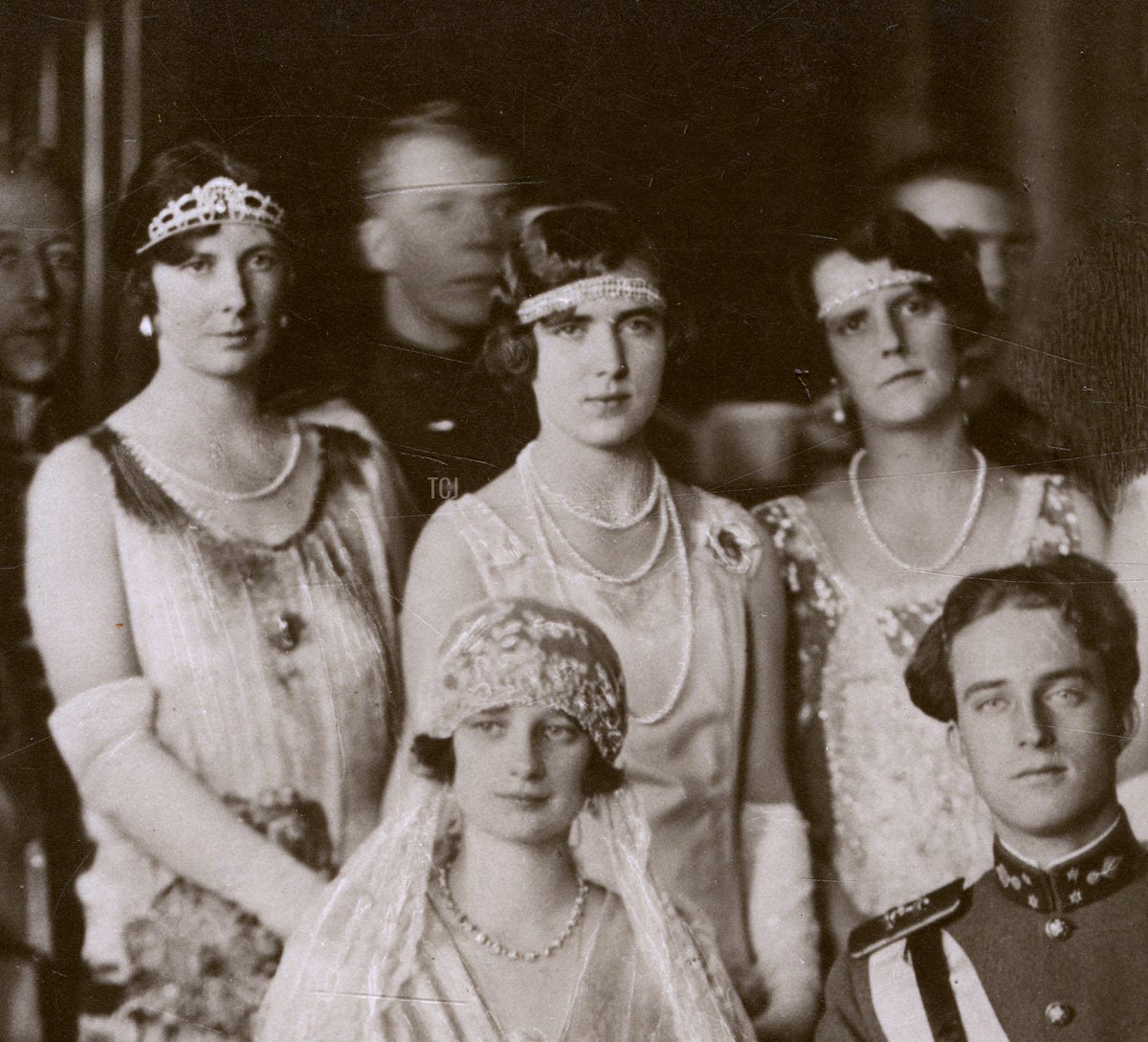
Behind Princess Astrid, three more royal princesses wear bandeau-style tiaras. The woman on the left (I think?) is Princess Feodora of Denmark, wearing a diamond tiara. In the center is Princess Ingrid of Sweden, later Queen of Denmark, who wears her late mother’s Connaught Turquoise Bandeau. And on the right is Princess Margaret of Denmark, wife of Prince René of Bourbon-Parma (and mother of Queen Anne of Romania), who also wears a slim jeweled bandeau.
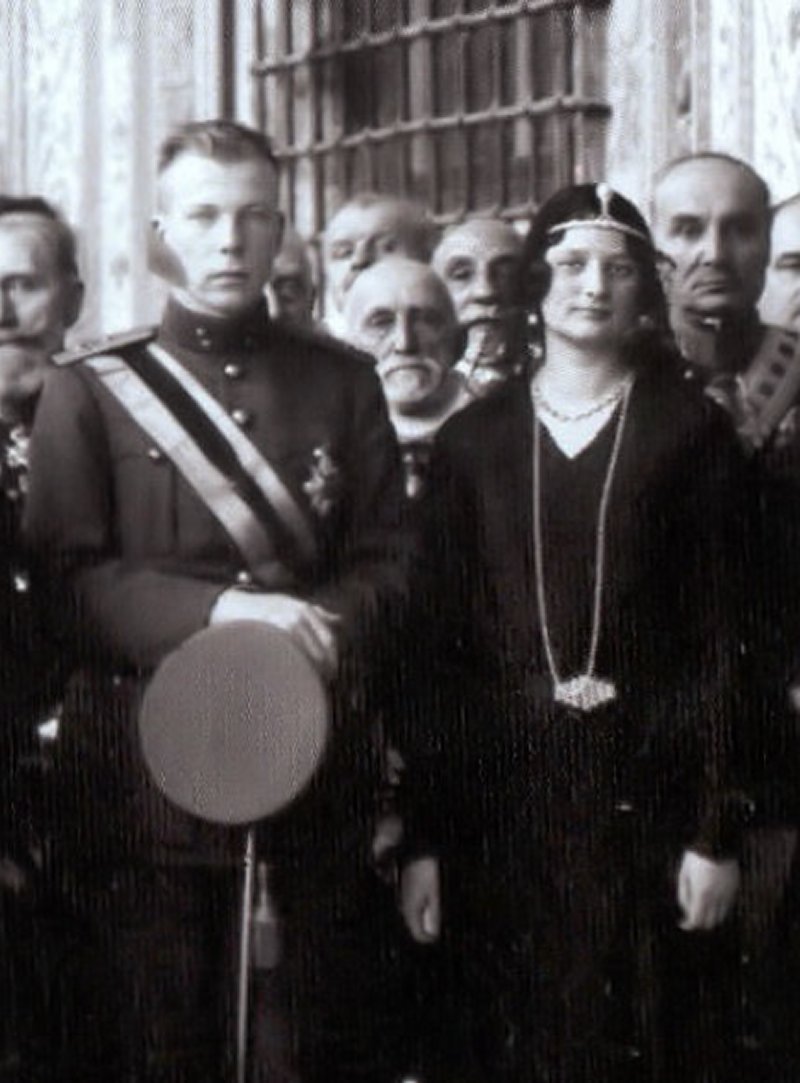
Astrid did receive two tiaras as wedding presents. The Stockholm Tiara, appropriately, was a wedding present from the people of Stockholm. Astrid wears the very unusual diamond and pearl tiara here at the Vatican in January 1930, during Princess Marie-José’s wedding celebrations. The whereabouts of this one appear to be unknown.
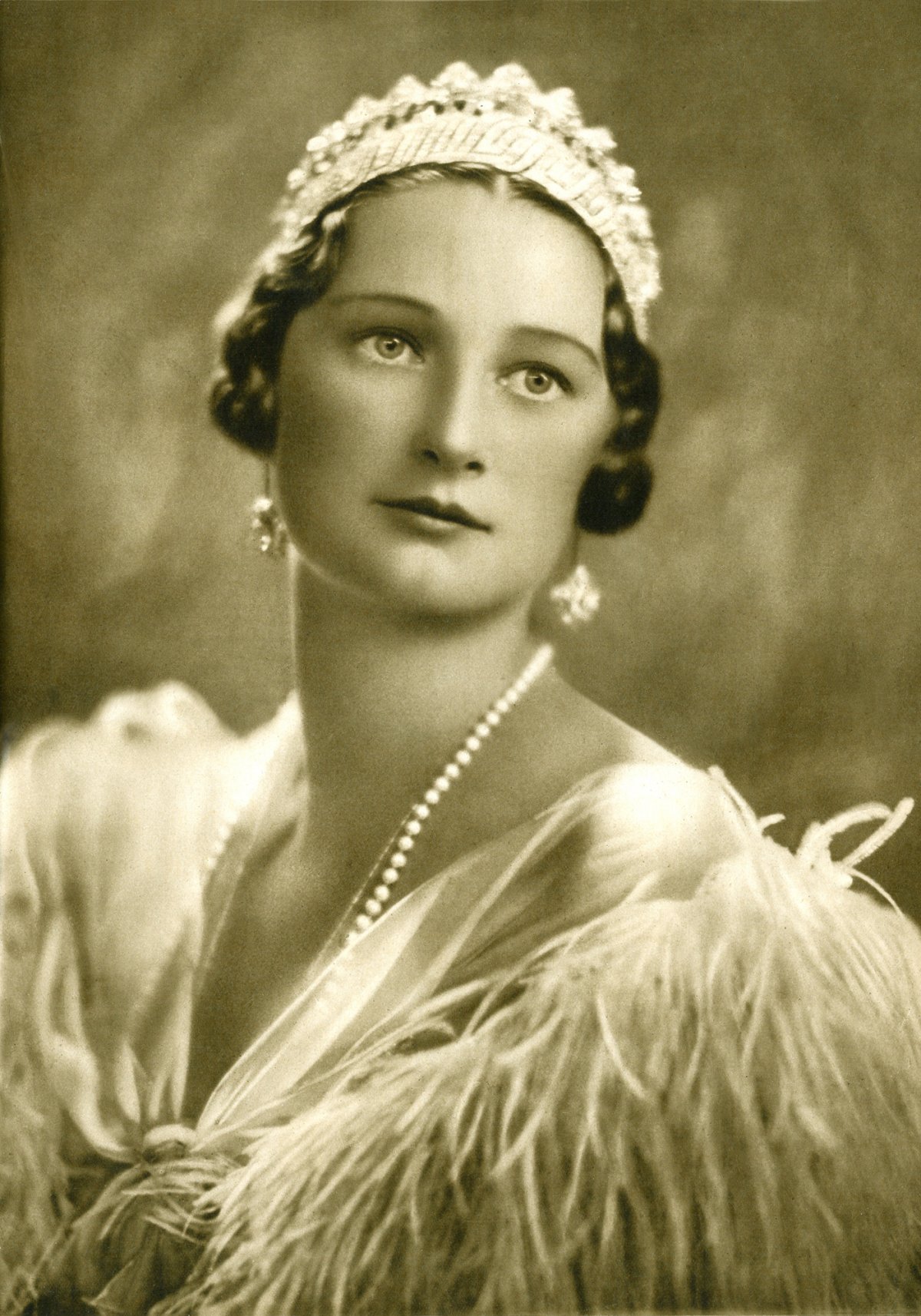
From the Belgian people, Astrid received the grand Nine Provinces Tiara. The versatile, spectacular diamond tiara has remained with the Belgian royal family, and is now worn by Queen Mathilde, wife of Astrid’s grandson, King Philippe.
Leave a Reply
You must be logged in to post a comment.